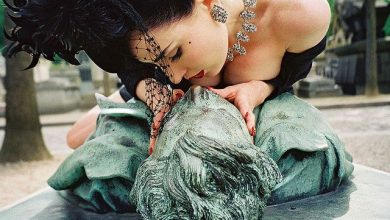Block Title
-
Philosophy

Timeless Principles of Power
A 2,300-Year-Old Guide to Statecraft, Leadership, and National Strength That Still Speaks to Today’s World…
Read More » -

-

-

-

-

-

-

-

-

-

-


A 2,300-Year-Old Guide to Statecraft, Leadership, and National Strength That Still Speaks to Today’s World…
Read More »











Gender equality and feminism are closely related to human rights, justice and democratic values in today’s world Davlatova Shodiyona |…
Read More »
No member of the family should be discriminated against based on gender Jasmina Rashidova Bahodir | Uzbekistan In today’s world,…
Read More »
Suppressing women’s intellectual and creative pursuits is not only unjust but also detrimental to society as a whole Abdul Basit…
Read More »
Sindh still struggles with tribal customs, low literacy rates, and patriarchal structures, which hinder women’s full participation in society Dr.…
Read More »
The article highlights critical issues like child marriages, domestic violence, and the pay gap, presenting a perspective on the true…
Read More »
Every day, 3 to 5 women in Pakistan are victims of violence, including honor killings. This shows how deep patriarchy…
Read More »
More than 35 women from diverse professional backgrounds, interacted with each other and learned about the core topics Karachi, Sindh…
Read More »
In the first phase, these centers will be set up in government offices and universities to facilitate working mothers All…
Read More »
Studies suggest, globally one in three women has been raped, beaten, coerced into sex or abused in her life time…
Read More »
In this world which believes in gender equality, in which women are educated and economically dependent, why are they still…
Read More »
The clock on societal change is ticking; let’s break these chains of misunderstanding and inequality about women By Narindar Kumar…
Read More »
Women Journalists from Balochistan and Sindh attended Digital Media Businesses Conference held in Karachi Karachi, Sindh Individualland Pakistan, a research-based…
Read More »
240-seat Boeing 737 transported overland from Karachi to Hyderabad Aamir Latif KARACHI, Sindh, Pakistan For the first time in Pakistan’s…

Alabai Day is the National Holiday to honor Turkmen Alabai, a large dog breed that is traditionally used to guard…

Women from all over come to the cemetery to kiss Victor’s lips, and rub the bulge in his trousers. By…

Latin American politicians, activists, artists and athletes are among the 100 most influential women in the world in 2002. Monitoring…

A 2,300-Year-Old Guide to Statecraft, Leadership, and National Strength That Still Speaks to Today’s World…
Read More »


